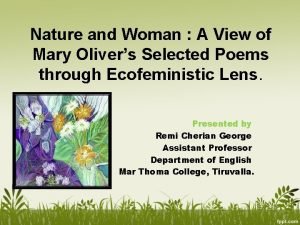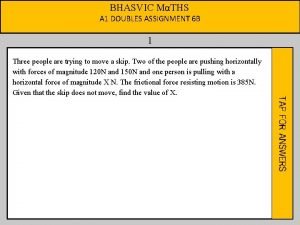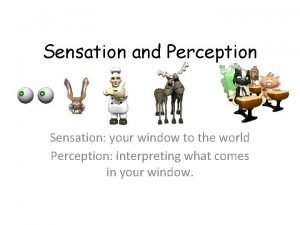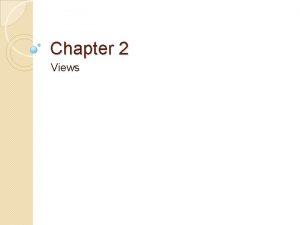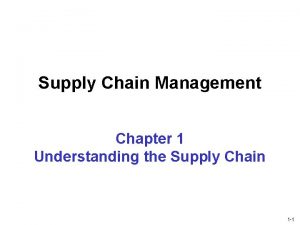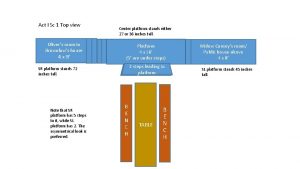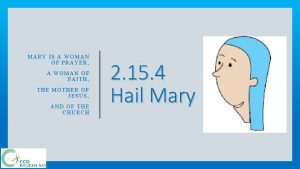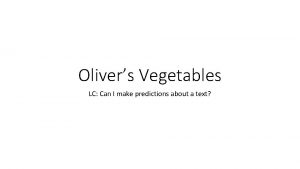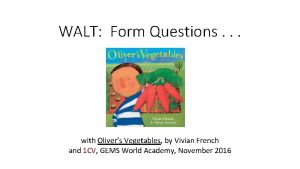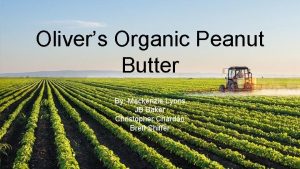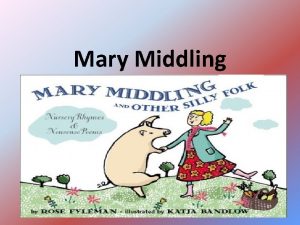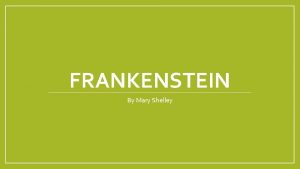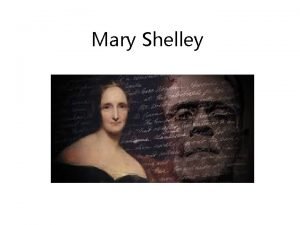Nature and Woman A View of Mary Olivers














- Slides: 14

Nature and Woman : A View of Mary Oliver’s Selected Poems through Ecofeministic Lens. Presented by Remi Cherian George Assistant Professor Department of English Mar Thoma College, Tiruvalla.

What is Ecofeminism? • Domination of both nature and women by men leads to ecological crisis • Synthesizes feminism and environmentalism • Coined by Françoise d’Eaubonne • Ascribes feminine values to nature • Capitalism and industrialism as products of patriarchy

Mary Oliver as a Poet

• An American poet born in 1935. • Winner of the prestigious Pulitzer Prize and the National Book Award. • First collection No Voyage and Other Poems was published in 1963. • Clear and poignant observances of natural world. • Poems as antidote to inattention and baroque conventions of everyday life.

Poems to be Analysed Ecofeministically 1. 2. 3. 4. 5. 6. 7. “Some Questions You Might Ask” “Sleeping in the Forest” “Aunt Leaf” “The Honey Tree” “The Fish” “Such Singing in Wild Branches” “Summer Day”

“Some Questions You Might Ask” • • • Questions man’s self centredness Every living being on earth has a soul Interconnected nature of living beings Love and concern for creatures Disseminates nature consciousness

“Sleeping in the Forest” • • • Comfort in the presence of nature Reverence for nature Self dissolving into the larger world Earth as a nursing and soothing mother Intense relation between earth and human being

“Aunt Leaf” • • Endows the leaf with womanhood Comradeship with the leaf Laments at human civilization Submerge and become a part of nature

“The Honey Tree” • Embodies a bear and displays its emotions • Sustaining and nourishing qualities of nature • Escape from human constraints • Represents freedom, celebration and empowerment

“The Fish” • Becoming one with the fish • Woman and fish as a victim and sacrificial object • Shared pain and sense of finality • Reciprocal relation between woman and nature

“Such Singing in Wild Branches” • • Eco consciousness and Eco sensitivity Attention to the world and life around Merging of the soul with nature Mind comforting and soul soothing experience • Reminder to exercise wisdom

“Summer Day” • • Natural world of a grasshopper Questions human conscience The effectiveness of religion Seeing nature in oneself as the best prayer to offer • Cooperate, collaborate and cohabit with nature

Conclusion • Female speaker’s engagement with nature • Drive home truths that are ineffable to human sensibilities • Mutual interaction and participation • Communion with nature as soul redemptive and life succouring • Earth as sacred and life as valuable

Thank You
 Aunt leaf mary oliver
Aunt leaf mary oliver Face recognition
Face recognition A woman travels in a lift. the mass of the woman is 50 kg
A woman travels in a lift. the mass of the woman is 50 kg Psychology
Psychology Once upon a time there lived a family of bears
Once upon a time there lived a family of bears Mary wollstonecraft mary a fiction
Mary wollstonecraft mary a fiction Nature and nature's laws lay hid in night
Nature and nature's laws lay hid in night Birds eye view angle
Birds eye view angle Simple view and complex view
Simple view and complex view Simple view and complex view
Simple view and complex view Simple view and complex view
Simple view and complex view Mvc partial view controller
Mvc partial view controller Pull supply chain
Pull supply chain Component of operating systems
Component of operating systems Objective of ethics
Objective of ethics
